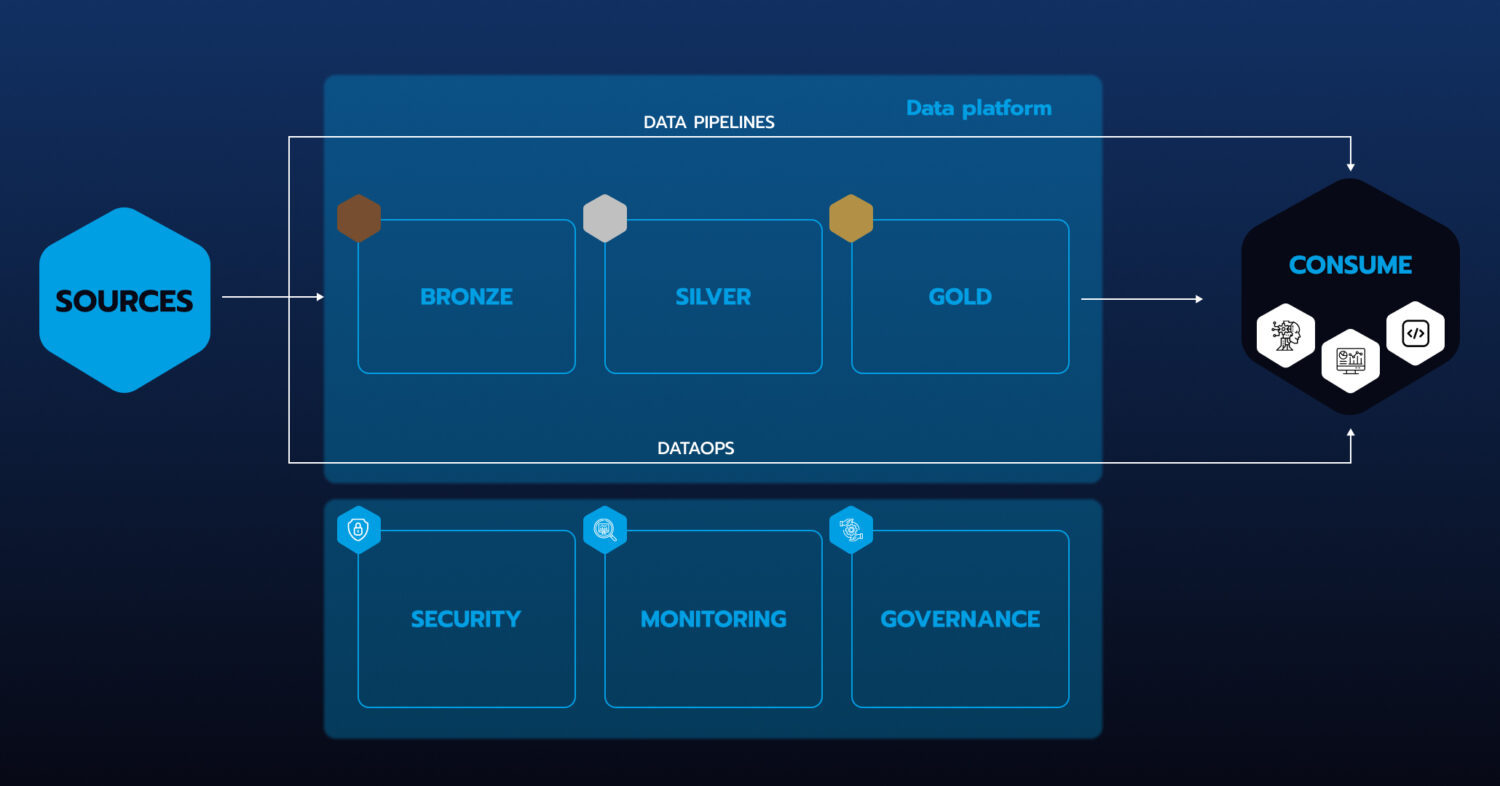// solutions
Data Architecture
Data architecture refers to the design and structure of an organization’s data assets, including how data is collected, stored, processed, and accessed. It encompasses the definition of data elements and their relationships, as well as the standards, policies, and procedures governing data management within an organization.
The importance of a well defined architecture
Data architecture is crucial for several reasons:
- Data Integration: A well-designed data architecture facilitates the integration of data from various sources, both internal and external. It ensures that data is standardized and consistent across different systems and platforms, allowing for seamless data flow and interoperability.
- Data Quality: By defining data standards and best practices, data architecture helps maintain data quality and accuracy. It includes mechanisms for data validation, cleansing, and enrichment, ensuring that only high-quality data is used for decision-making and analysis.
- Data Governance: Data architecture provides the framework for effective data governance, including policies, procedures, and controls for managing data assets. It ensures compliance with regulatory requirements, privacy laws, and industry standards, while also addressing issues related to data security and confidentiality.
- Scalability and Performance: A well-designed data architecture is scalable and can accommodate the growing volume, variety, and velocity of data. It includes considerations for performance optimization, such as data partitioning, indexing, and caching, to ensure timely access to data and efficient processing of queries.
- Data Analysis and Insights: Data architecture plays a crucial role in supporting data analysis and decision-making processes within an organization. It provides the foundation for building data pipelines, analytical models, and reporting frameworks, enabling stakeholders to derive valuable insights from data and drive business outcomes.
- Cost Efficiency: By rationalizing data storage and management practices, data architecture helps optimize resource utilization and reduce infrastructure costs. It enables organizations to prioritize data based on its value and usage, leading to more efficient allocation of resources and budget.

Overall, data architecture serves as the blueprint for organizing, managing, and leveraging an organization’s data assets effectively. It aligns business objectives with technical requirements, enabling organizations to harness the full potential of their data to drive innovation, competitiveness, and growth.

